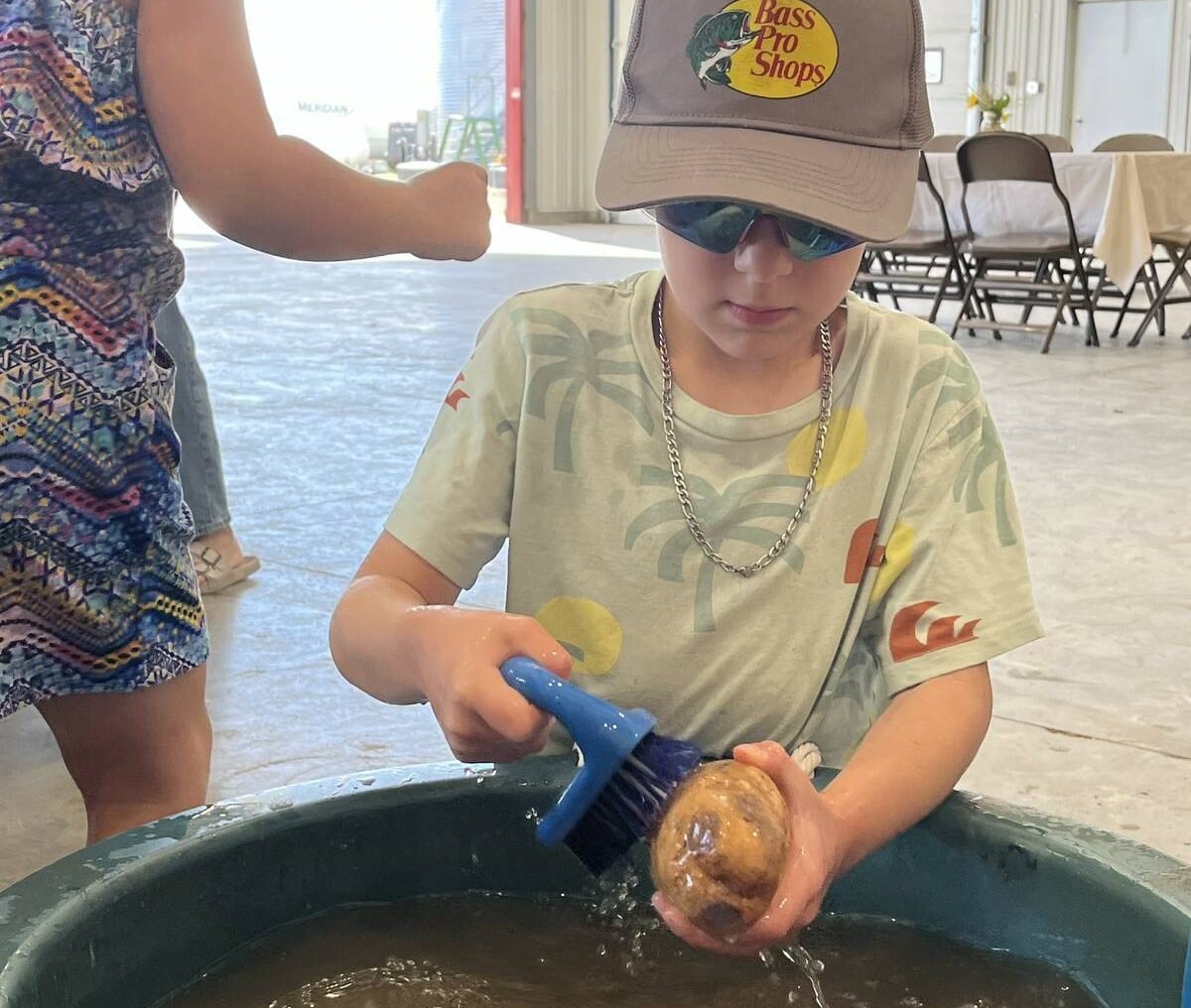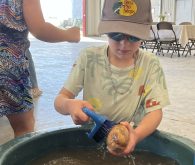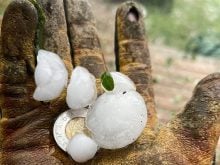It is great to be home after spending 21/2 months in Arizona.
One activity I enjoyed while away was quilting. A nearby quilting store offered lessons so I enrolled in a beginner’s class. We learned the basics of cutting with rotary cutters (a first for me), accurate stitching and the importance of pressing. I wonder how my grandma made such beautiful quilts without all the fancy measuring and cutting devices we have today.
At the first class it was fun going into the store to pick seven different but matching fabrics. With these fabrics we learned how to make several different kinds of blocks and then made them into a sampler quilt. I was pleased with the results.
Read Also

Agri-business and farms front and centre for Alberta’s Open Farm Days
Open Farm Days continues to enjoy success in its 14th year running, as Alberta farms and agri-businesses were showcased to increase awareness on how food gets to the dinner plate.
They say quilting is addictive and now I believe that.
Gardening is about caring and nurturing. There are many lessons we learn from gardening.
The responsibility of watering, chasing bugs, weeding and pruning is part of it, along with the risks and disappointments nature offers.
If you still have space in your garden to include your children or grandchildren, here are some ideas:
- Create the boundaries of the garden to help the child recognize it as their special space and to give them a sense of ownership. Use a fence, flowers, bricks or stones to define the edges.
- Children will be happier and feel more successful if they have tools suited to their size. Weight is as important as height, so cutting off the handle of a hoe or rake will still leave it too heavy.
- Turning over the soil may be too heavy for the child, but they may be able to break up the lumps.
- Start by looking through seed catalogues together, selecting fast and easy-to-grow plants. For younger children, choose plants with large seeds, such as beans, pumpkins, gourds or peas.
- Growing vegetables gives a child something they can eat or serve to adults, giving them pride and an increased desire for eating vegetables.
- Gourds are fast and fun to grow. Allow lots of space for growing. At the end of the season when you harvest the gourd, you can make a birdhouse, painted ornament or maraca, a percussion instrument played like a rattle.
- Grow a sunflower fort. Take string and stakes to mark the outline and doorway. Plant the seeds on the outside of the string in rows of two to make the walls thick. Water and wait. In a few months you’ll have a wonderful hideout.
- Make a garden journal. Clip pictures from seed catalogues or attach the seed packets to the journal page. Chart when you sow the seeds, when they germinate and when you harvest. Record special events such as a sighting of a butterfly.
- Add art. Paint rocks to decorate the garden with faces, butterflies, flowers, bugs or bright patterns.
- Build a scarecrow and set it in the garden.
Water stains on wood furniture
How can water stains be removed from furniture?
Because of different woods and wood finishes, what might work for one stain may not for another. Here are a variety of remedies you can try. Always test on a small hidden area first to be sure it doesn’t damage the finish.
Haley’s Cleaning Hints by Graham and Rosemary Haley, 3H Productions, 2000 suggests:
- For water rings on wooden furniture, apply regular mayonnaise for at least three or four hours, preferably overnight. Wipe off with a soft cloth.
- For water spots, make a mixture of 1/2 teaspoon (2 mL) lemon oil and 1 cup (250 mL) denatured alcohol. Wipe mixture on the area and buff it dry immediately.
Haley’s Cleaning Hints books can be purchased at bookstores or by calling toll free 800-665-3692 or Box 71062, Burlington, Ont. L7T 4J8 or at www.haleyshints.com.
Heloise Hints (from the Arizona Tribune) suggests making a paste with equal amounts of baking soda and white non-gel toothpaste.
Dampen a sponge or a clean, soft cloth with water and dip it into the paste. Work at the stain using a circular motion.
Do a small area at a time until the stain is removed. It may require more than one application and lots of elbow grease. Once the stain has been removed, wipe with a soft, damp cloth and buff dry.
Finally, rub on some of your favorite furniture polish.
Removing Spots & Stains, a little booklet printed many years ago by Dell Publishing Co., Inc. and distributed by Esso, adds the following advice:
- Rub the stain with a cloth dipped in a solution of 1/2 teaspoon (2 mL) vinegar in a cup (250 mL) of cold water.
If the stain persists, dampen a lintless cloth with hot water to which several drops of ammonia have been added; apply directly to stain, then wipe immediately with a clean cloth soaked in furniture oil.
- If the finish on the wood is shellac, try rubbing gently with a lintless cloth dampened with alcohol. Wipe immediately with a clean cloth soaked in furniture oil.
- A white or milky film, usually caused by absorbed moisture, can sometimes be removed by rubbing vigorously with a soft cloth and furniture oil. Another method is to apply a paste made by mixing table salt with furniture oil. Rub paste on stain, then wipe off and apply furniture polish or wax.
- Stains on unfinished or raw wood surfaces can be extremely difficult to remove. Treat surface stains by sponging with mild soap and lukewarm water; then rinse with clear water and wipe dry.
Stubborn surface stains may respond to a light buffing with very fine grade sandpaper or steel wool. If necessary, dip the sandpaper or steel wool in a solvent. Always sand with the grain of the wood.
If the stain persists:
- Treat stains that are lighter than the wood with a colored wood stain that matches the surface. (Test it first on a hidden area to be sure the color match is exact.)
- Treat stains that are darker than the wood with household ammonia. Apply ammonia with a small brush; rinse when stain has bleached to match wood. If ammonia is not effective, try chlorine bleach.














